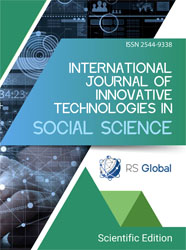THE ROLE OF THE TEXTBOOK IN PROMOTING ENVIRONMENTAL EDUCATION VALUES AMONG FIFTH-GRADE PRIMARY PUPILS IN ALGERIA
Abstract
This study aimed to explore the role of the Science and Technology textbook in fostering environmental education values among fifth-grade primary school pupils in Algeria. The research employed a descriptive-analytical approach through a content analysis of the Science and Technology textbook used in the fifth grade. The findings revealed that the textbook contributes to the development of environmental education values to varying degrees, with percentages of 49.54%, 28.19%, and 22.25%, respectively. The cognitive domain ranked first in terms of emphasis, followed by the affective domain in second place, and finally the psychomotor domain, which ranked third.
References
Almencion, S., Otagan , R., Tingal, J., & Davin, J. (2024, 10 04). Environmental Education and Pro-Environmental Behavior Among Um Peñaplata College Students. Contemporary Research Analysis Journal, 01(114), pp. 116-124.
Babanassis, S., & Anastasatos, n. (2005). Elaboration, application and evaluation of an Environmental education programme. Periodica polytechnica ser. Soc. Man. Sci., 13(02), pp. pp. 227–242.
Dalal, J. (2015). Concept of Creative Time Management by Malik Bin Nabi,. PhD Thesis, Department of Psychology and Education Sciences, University of Setif 2.
Zhao, Y., Xuanchang , L., & Xiao , H. (2024, 12 03). Enhancing pro-environmental behavior through nature-contact environmental education: an empirical analysis based on randomized controlled experiment design. Front. Environ. Sci. Environmental Citizen Science, pp. 1-15.
Views:
315
Downloads:
112
Copyright (c) 2025 Elbouche Zina, Latreche Halima

This work is licensed under a Creative Commons Attribution 4.0 International License.
All articles are published in open-access and licensed under a Creative Commons Attribution 4.0 International License (CC BY 4.0). Hence, authors retain copyright to the content of the articles.
CC BY 4.0 License allows content to be copied, adapted, displayed, distributed, re-published or otherwise re-used for any purpose including for adaptation and commercial use provided the content is attributed.











